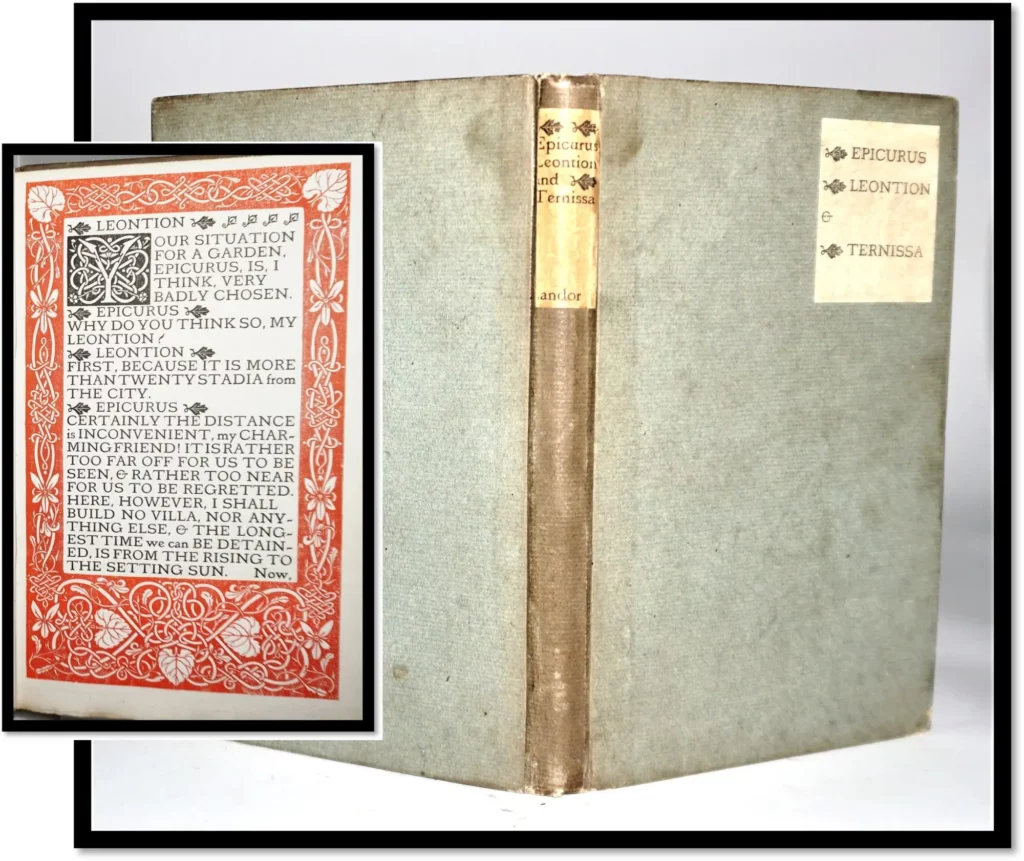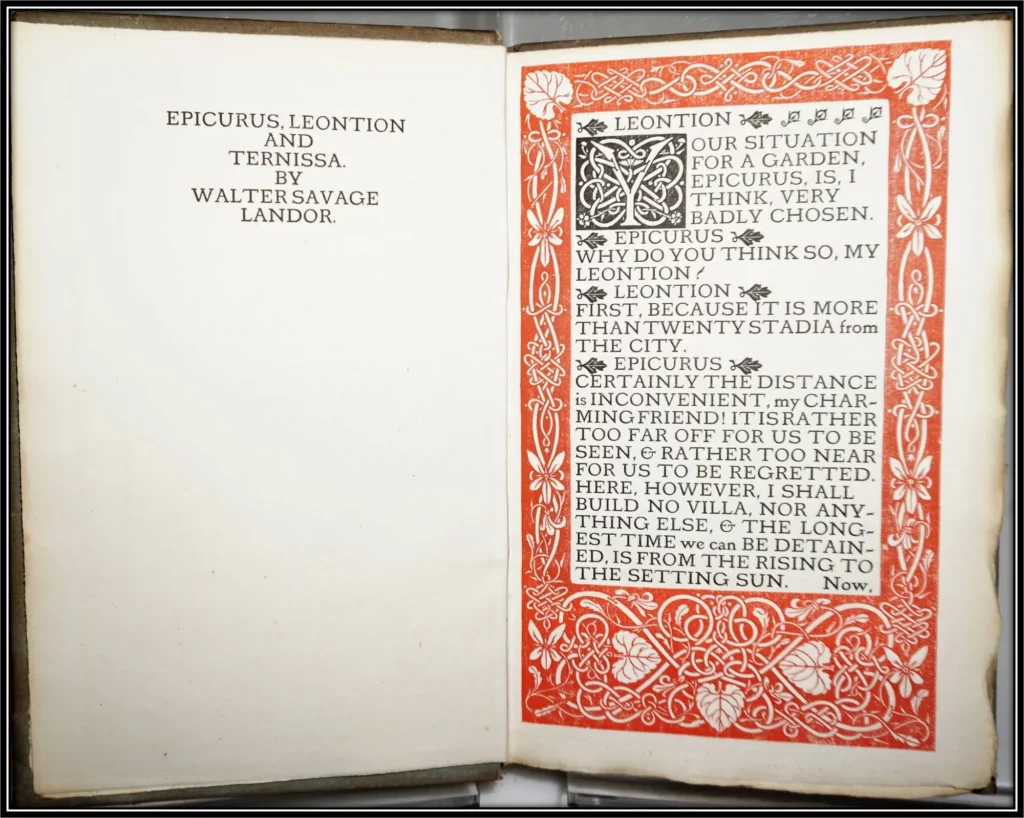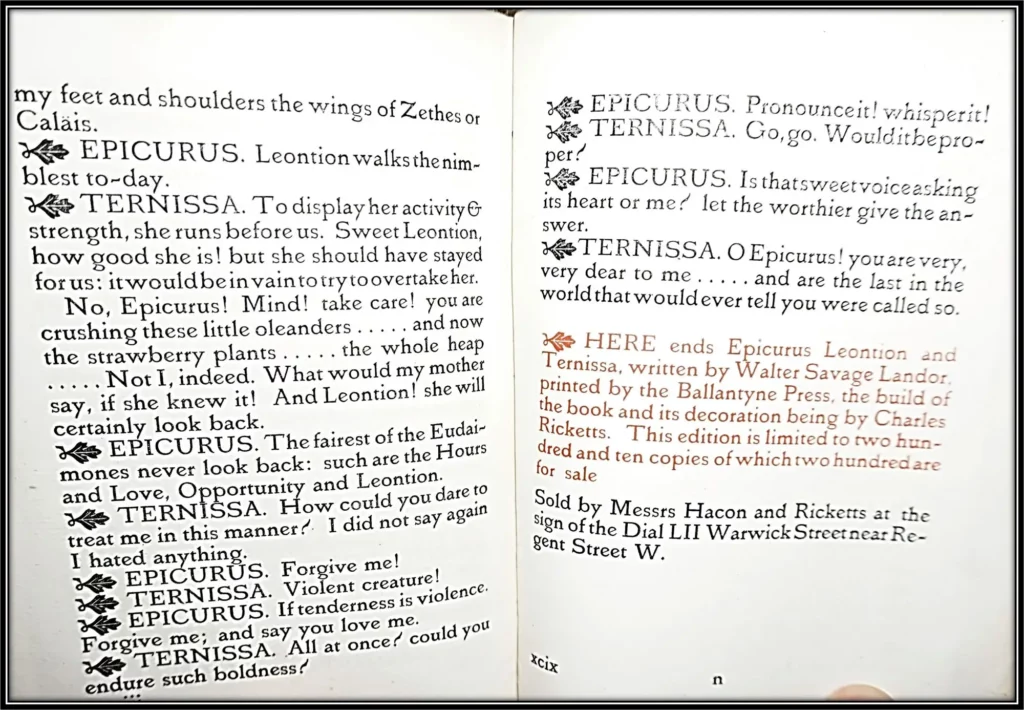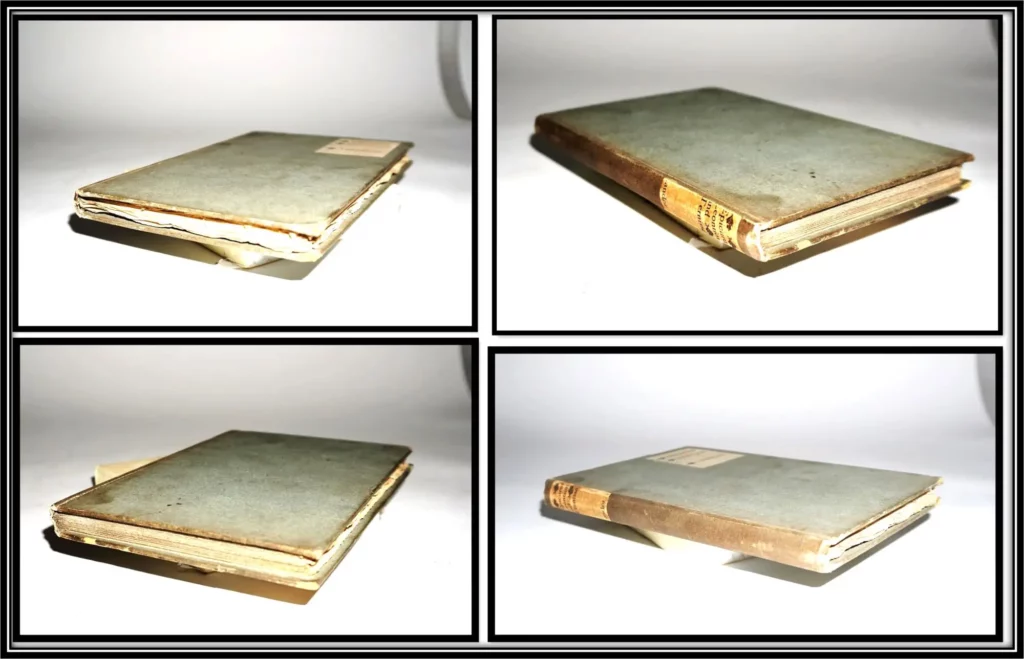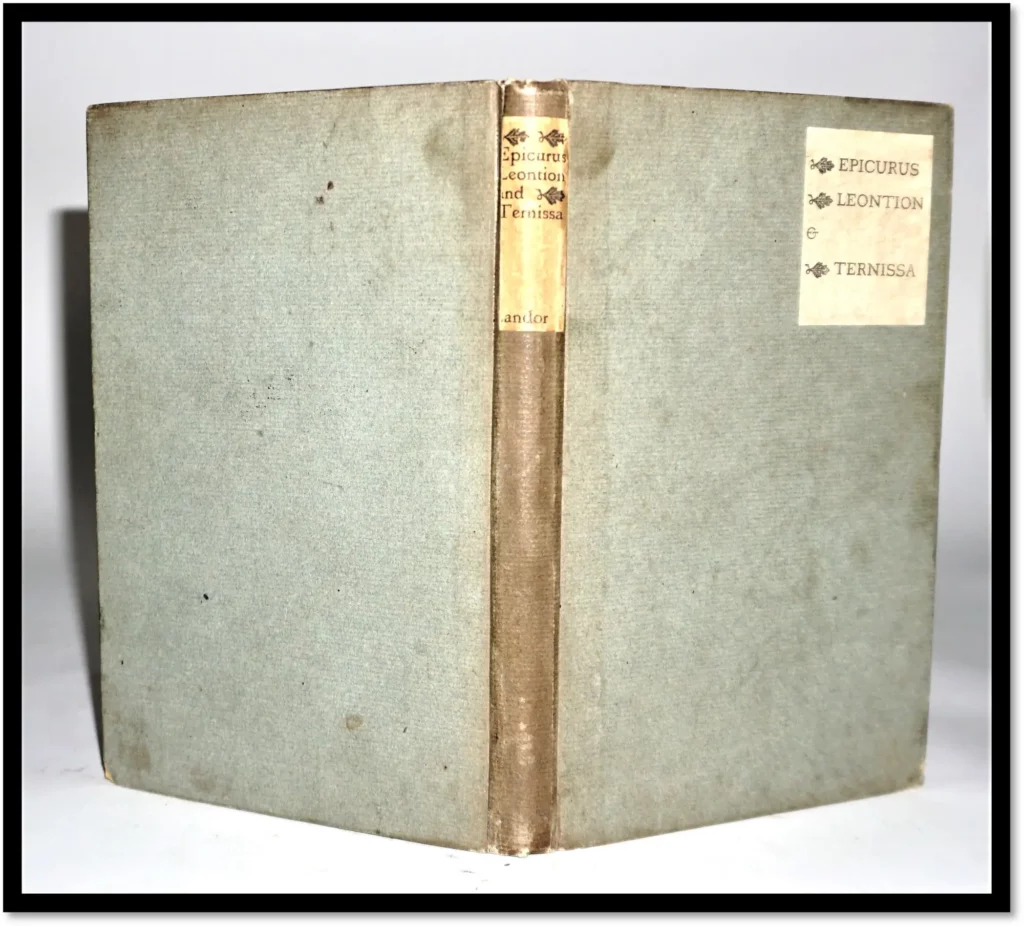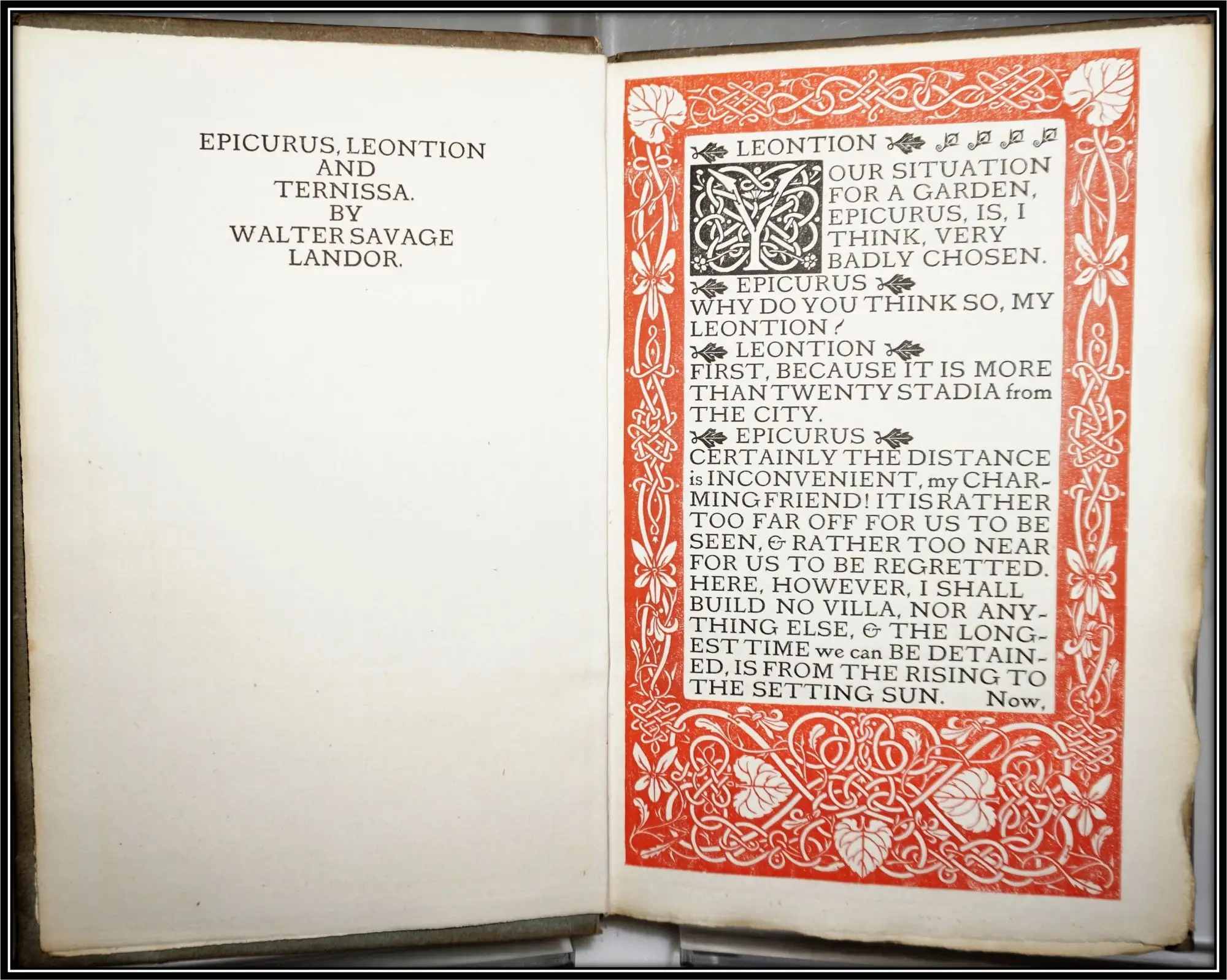Landor, Walter Savage (1775-1864)
[Vale Press, Charles Ricketts] Epicurus Leontion Ternissa
London: Vale & Ballantyne Press For Hacon and Ricketts, 1896. Topography by Charles Ricketts (1866-1931). Limited Edition of 210. Hardcover.
Limited to 210 copies, 200 for sale; The Second book published by the Vale Press in the same month as Milton.
Sold by Hacon and Ricketts. Printed at the Ballantyne Press ‘where a handpress and pressman were reserved exclusively for Rickett’s use under his own personal supervision’ [Cave]
Frontispiece, border and initial letters designed and cut on wood by Charles Ricketts. The border was not used again, and the firm mark was afterwards recut. Ricketts took the liberty of ‘adding the flower and stems of the violet to the traditional 16th century strap and knotwork motifs.
Blue paper boards, printed labels on upper corner and spine. Printed in Vale type in black and red on laid-paper watermarked, Unbleached Arnold paper. The bindings are tight and square. Text clean, light even toning. Shelf handling wear with a darkened spine; small rubs on the front top and bottom corners; free endpages, as typical are toned; Some hand-soiling.
Very Good / No Dust Jacket As Issued. Item #17057
The Second book published by the Vale Press in the same month as Milton.
Landor’s ‘Imaginary Conversation’ was first printed in 1829. As a poet, Walter Savage Landor was best known for his classic epigrams and idylls. He was a seriously emulative classicist and wrote a significant proportion of his poetry in Latin, which was also the original language of some of the long and short poems that he published in English.
Background Information:
Robert Pinsky has characterized Landor’s poetry as distinguished above all by an urbane awareness of rhetorical and stylistic convention-“a voice more resonant than any particular moment of history.”
The “Saturday Review” (July,1896) noted ‘The workmanship and design of the border’ were ‘beyond praise’ concluding that ‘it was of the most perfect books of its size ever published’.
Hugh Whitemeyer has described Landor’s contribution to Pound’s cultural ventriloquism and to his sympathetic conception of the artist figure in isolation, a persona of dedicated unpopularity and expatriation. Pound’s particular interest in Landor’s poetic style, seeing him as a master of the “hardness” effected by minute control of emotion and technical detail, has stimulated the attention of several poet-critics to Landor’s play with conventional language.
Ref: Ricketts, xix; L’Art Ancien, 22; PoetryFoundation; Watry B2
